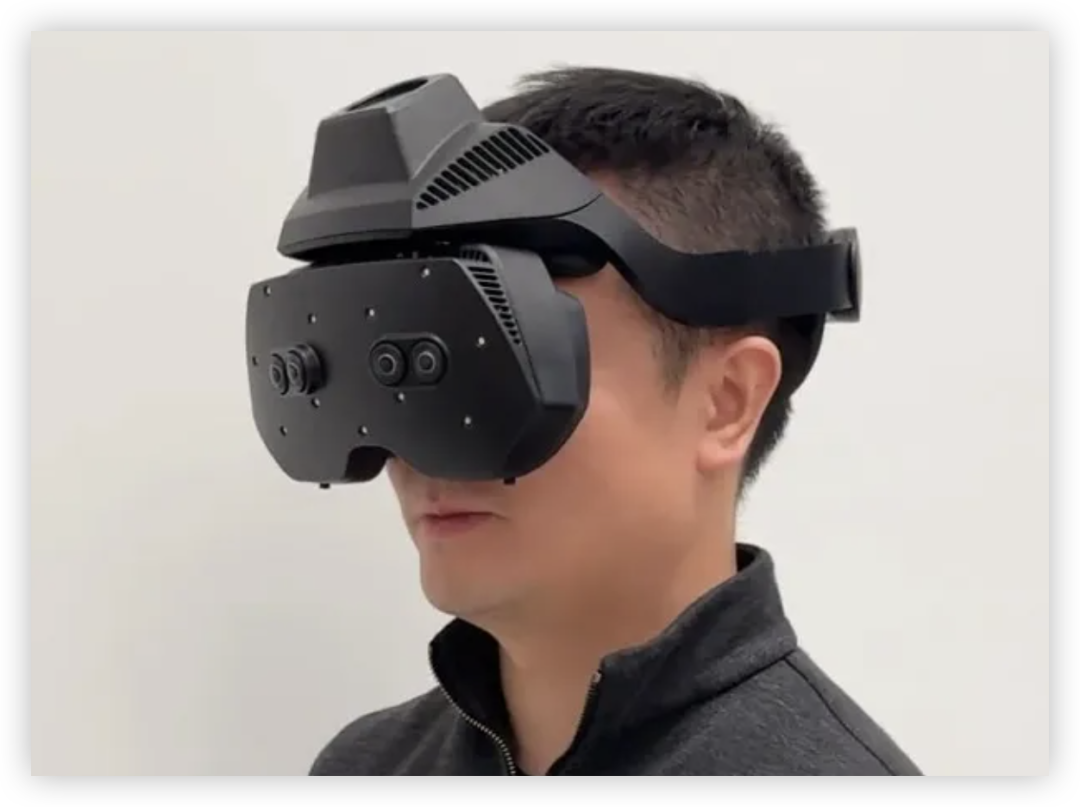Meta Unveils 180° Ultra-Wide VR Headset Prototype: Is the Panoramic Era Here?

The current VR/MR headset market faces a persistent dilemma: to achieve ultimate immersion, you need a wide field of view (FoV); but as FoV increases, headsets tend to become bulkier and heavier—an unsolvable trade-off that has stumped tech giants for years. Recently, however, Meta’s breakthrough research seems to have found a way out: not only achieving an ultra-wide FoV, but also keeping the device impressively compact. Is this just a proof of concept, or a sign of imminent industry disruption?
Meta’s progress in VR/MR headsets marks a major leap forward. They have successfully merged an ultra-wide FoV with a compact design, painting a new future for immersive experiences. This is not just a technical victory, but a sign that user experience is about to take a qualitative leap.
Technical Highlights: High-Curvature Reflective Polarizer, The Magic Behind the Field of View
The core of Meta’s breakthrough lies in two optical architectures, both ingeniously using “high-curvature reflective polarizer” technology. This innovation allows light to reflect multiple times within the lens, achieving a massive FoV in a very small space.
Traditionally, expanding the FoV in VR headsets required huge lens assemblies. Meta’s new technology, however, folds the complex “light path” into a thinner, lighter body. This design enables the pure VR prototype to achieve a stunning 180-degree horizontal FoV, and even the MR prototype, with high-resolution passthrough cameras, matches the ultra-wide mixed reality view of VR.
Imagine wearing such a headset: you’re fully immersed in the virtual world, yet can clearly see friends nearby—or even notice snacks on your lap. This seamless switching greatly enhances the practicality and immersion of MR.
Disruptive Experience: Goodbye to the "Tunnel Vision" Era
Even top products like Quest 3 fall short of the human eye’s natural horizontal FoV, always giving a sense of “tunnel vision.” Meta’s ultra-wide prototype, however, stretches the horizontal FoV to 180 degrees—almost matching human vision.
This means you’ll have a much more complete peripheral view in virtual worlds, whether gaming, watching movies, or collaborating remotely, resulting in unprecedented realism.
The boost in immersion is huge. In games, you no longer need to constantly turn your head to spot enemies on the sides; in virtual meetings, you’ll feel truly present, interacting naturally with avatars. For remote presentations, it makes distant communication feel face-to-face.
Commercialization: From Lab to Mainstream
Of course, as a tech giant’s research result, we must be rational. CTO Bosworth has admitted that many “black technologies” in R&D may not be commercialized immediately, due to high costs, production challenges, or unresolved technical bottlenecks.
Nevertheless, Meta’s research points the way for the entire VR/MR industry. It proves that ultra-wide FoV and compact size can coexist, providing valuable experience for future headset design. Even if these prototypes don’t go straight to market, their technology and design concepts will accelerate the next—and even next-next—generation of VR/MR products.
The Future Is Here, But Patience Is Needed
Meta’s ultra-wide FoV VR/MR headset prototype is undoubtedly a milestone in the history of VR/MR development. It shows us a future where virtual and real worlds blend more immersively, naturally, and comfortably. While it may take time for these breakthroughs to reach consumers, our expectations for future technology remain undiminished. Every technological leap unlocks a broader digital world—let’s wait and see when Meta will bring these amazing innovations into our daily lives.
Reference: https://www.roadtovr.com/meta-researchers-reveal-compact-ultra-wide-field-of-view-vr-mr-headsets/
分享文章
3篇相关文章
Meta's Two Future-Grade VR Prototypes Revealed: Disruptive Quality vs Extreme Field of View, Which One Do You Choose?
2025-08-12
Meta unveils two cutting-edge VR prototypes 'Tiramisu' and 'Boba 3', focusing on极致画质 and ultra-wide field of view respectively, heralding two major directions for future VR technology development, giving you a glimpse into the ultimate form of the metaverse.
Meta Horizon Haptics Studio Launches: Ushering in a New Era of VR Haptics
2025-07-17
The launch of Meta Horizon Haptics Studio signals a revolutionary breakthrough in VR haptic technology, bringing unprecedented immersive experiences to developers and users alike.
Social VR Cinema: Meta vs Bigscreen – The Battle for the Next Entertainment Frontier
2025-07-04
A recent leak of Meta's Quest theater environment prototype signals its active push into social VR cinema, directly challenging Bigscreen—the long-standing 'king' of VR theaters. This move is not only a key step in Meta's Horizon OS ecosystem strategy but could also reshape the future of VR social entertainment. However, with challenges in content licensing and user-generated streaming, can Meta replicate Bigscreen's core appeal and convert its massive user base into loyal 'cinema audiences'? This article analyzes the leak, explores Meta's strategy, and looks ahead at the prospects and challenges in the social VR cinema race.